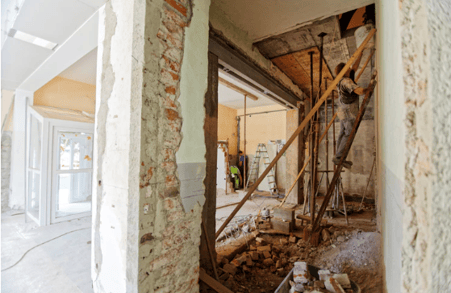 Spring inspires home improvement and renovation projects. With so many ways to improve your home and increase your home’s value, it can be a nail biter finding ways to avoid going over budget.
Spring inspires home improvement and renovation projects. With so many ways to improve your home and increase your home’s value, it can be a nail biter finding ways to avoid going over budget.
If only life went perfectly as planned! You start a home improvement project only to find several things along the way that need to be fixed which can exceed your budget with little to show for it.
Fortunately, there are ways to prepare and avoid costly home improvement mistakes. For you next project, try following these ten tips.
10 Ways to Avoid Costly Home Improvement Mistakes
With a bit of prep and a few precautions, you can knock out the home improvement projects you’ve been wanting to tackle with minimal room for error in your budget.
Below are ten ways to help you avoid costly home improvement mishaps that help you stay on budget and increase your home’s value.
1. Wear your safety goggles
You’re fixing up your home, not stitching up your fingers or entertaining an emergency room visit.
A common home improvement mistake is forgetting to put safety first. Remember to wear your safety goggles, to not overload outlets and to turn off breakers to help you avoid disaster.
2. Only hire real professionals
Unfortunately, there are several professionals who simply aren’t qualified for the job. Only hire licensed home improvement professionals, such as electricians, plumbers, installers etc., who have the appropriate license or state certification to work on your renovations.
3. Don’t underestimate the importance of the Subfloor
Subfloors act as a moisture and soundproof barrier that lay under hardwood or laminate flooring. Plus, they help ensure a level surface.
4. Acquire the appropriate building permits
Learn what local building permits, codes and inspections are needed in your area to legally build or renovate as you’d like.
The last thing you’d want is to invest your time, money, and energy into home improvements just to have to tear them down because it didn’t meet your local building codes.
5. Consider your window style and quality
Your home’s interior and exterior shell has a certain style, so when shopping for new installations, such as your windows and doors, you’ll want to select styles that match your home’s appearance and architecture.
Similar to matching the aesthetic parts of your home, your windows should match your lifestyle too. By choosing high-quality windows, you can customize your home’s natural illumination, ventilation and heat infiltration that directly impact your comfort and energy bills.
6. Measure, measure and measure again
Easily one of the costliest home improvement mistakes results from mismeasuring cabinet sizes. Always measure, remeasure and repeat until confident of the proportions.
7. Don’t go with the cheapest contractor
Cheaper doesn’t always mean better. Bring in a few licensed contractors and compare their written estimates. The more detailed and specific the estimate, the less likely you’ll get nickeled and dimed for things down the road. Good estimates should include:
-
Exact cabinets, hardware, flooring, install costs etc.
-
Waste removal plans
-
Permit costs
-
Insurance
-
General contractor fee
-
Process for design changes
-
Work warranties
8. Overestimate your budget
Just as some things happen unexpectedly in your day to day life, unexpected things may happen during home improvement projects.
The best way to avoid costly home improvement mistakes is to give your renovation budget a little wiggle room for the unexpected, such as electrical issues or having to replace some of the drywall. A good rule of thumb is to set aside 15% of the total project cost to give you some breathing room.
9. Don’t follow trendy styles
What’s in season now, may not be in five years. Respect your space by not overdoing it with trendy appliances or installations that you’ll want to throw or trade out in a few years.
10. Keep in mind the value of invisible improvements
There’s a lot of work that goes into an efficient, comfortable and healthy home. You may need to spend an extra $1,000 now for quality installations to avoid a potential infrastructure problem later.
For example, if you live in Florida, or on the coast, spending a little more for quality high-performance windows and doors can prevent overspending on energy bills and protecting your home from hurricane damage.
What’s Your Home Improvement Project?
Mistakes happen, but there are ways to minimize, if not prevent, them from ruining your home improvement projects.
Let us know what home improvement project you’ve been wanting to dive into and how you avoid making costly home improvement mistakes.


